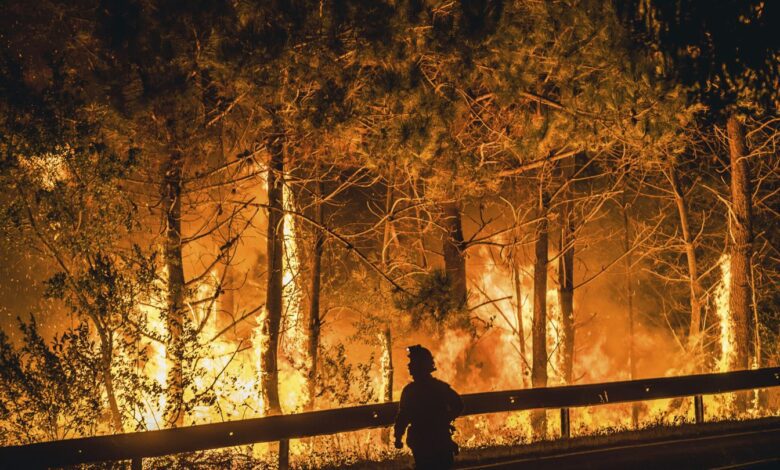
In 2025, Spain experienced one of the most devastating series of wildfires in its recent history. The regions of Castilla y León, Galicia, and Extremadura were hit especially hard, with tens of thousands of hectares burning and local authorities unprepared for such a large-scale threat.
At the start of the fire season, officials from the regional governments of Castilla y León and Galicia assured the public that their emergency services were fully equipped. However, just days after the first outbreaks, it became clear that resources and personnel were insufficient, and coordination between units was lacking. Firefighters and forest inspectors reported that they faced not only the flames, but also chronic problems that had been warned about for years.
In the village of Losacio (province of Zamora), residents were forced to defend their homes on their own as no professional firefighters were present. The situation was saved only through the efforts of volunteers, municipal support, and a shift in the wind. In the neighboring village of Abejera, the fire destroyed part of the settlement, and victims are still recovering in hospitals. Such incidents were repeated throughout Castilla y León, especially in the provinces of León, Zamora, and Palencia, where residents complained of chaos and a lack of coordinated response.
In Galicia, firefighters also faced staff shortages. In one incident in the village of Vilardevós (Ourense province), a crew arriving at the scene of a fire was unable to begin work due to the absence of a supervisor—he had to leave his post because of overwork and there was no replacement. As a result, equipment stood idle while the fire continued to spread. Unions and professional associations stress that the number of forest inspectors has not increased since 1985, despite growing risks.
At the height of the crisis, authorities in Galicia and Castilla y León urgently tried to recruit new personnel, but many positions remained unfilled. According to union estimates, in Ourense alone around 80 specialists were missing, and some equipment went unused due to a lack of drivers. Meanwhile, regional leaders demanded additional support from the central government—from heavy equipment to aircraft and military units.
The situation was further complicated by the involvement of untrained newcomers in firefighting efforts, increasing risks and reducing overall effectiveness. Experienced staff tried to prevent them from making critical decisions, but there was no time for proper training. In some cases, assistance offered from other regions was declined or left unused, leaving experts puzzled.
The authorities of Castilla y León and Galicia attributed the problems to extreme weather conditions and the scale of the disaster. However, firefighters and forest inspectors believe the crisis stems from years of underfunding and a lack of systematic training. After the catastrophic 2022 fires in Sierra de la Culebra, promised reforms did not materialize, leaving many issues unresolved.
Firefighters reported poor nutrition, outdated equipment, and a lack of basic working conditions. Some crews had to drink water from garden hoses and sleep on the floor. In Galicia, confusion left some equipment idle and staff waiting for instructions for hours. At the same time, professionals emphasize that despite all the difficulties, regional firefighters possess deep knowledge of the local terrain and fire-fighting tactics, but the lack of high-level coordination undermines their efforts.
In Extremadura, the situation unfolded differently. Two major fires broke out: one in Llerena (Badajoz), which was quickly contained, and another in Jarilla, which burned more than 17,000 hectares. Local firefighters believe the main causes are insufficient prevention and a lack of regular forest maintenance. In their view, fire-fighting efforts should begin in winter, when preparations can be made for the summer season.
At the height of the crisis, Extremadura faced a shortage of aircraft and equipment, as a significant portion of resources had been redirected to Galicia and Castilla y León. Units from other autonomous communities, as well as helicopters from Slovenia and the Czech Republic sent through European support channels, came to the region’s aid. However, by the time they arrived, most of the area was already engulfed in flames.
Experts note that the current crisis is the result of a combination of extreme heat, drought, and insufficient service preparedness. The 2025 fires have demonstrated that without systemic changes, increased funding, and strengthening of personnel, Spain risks facing similar catastrophes again in the future.






